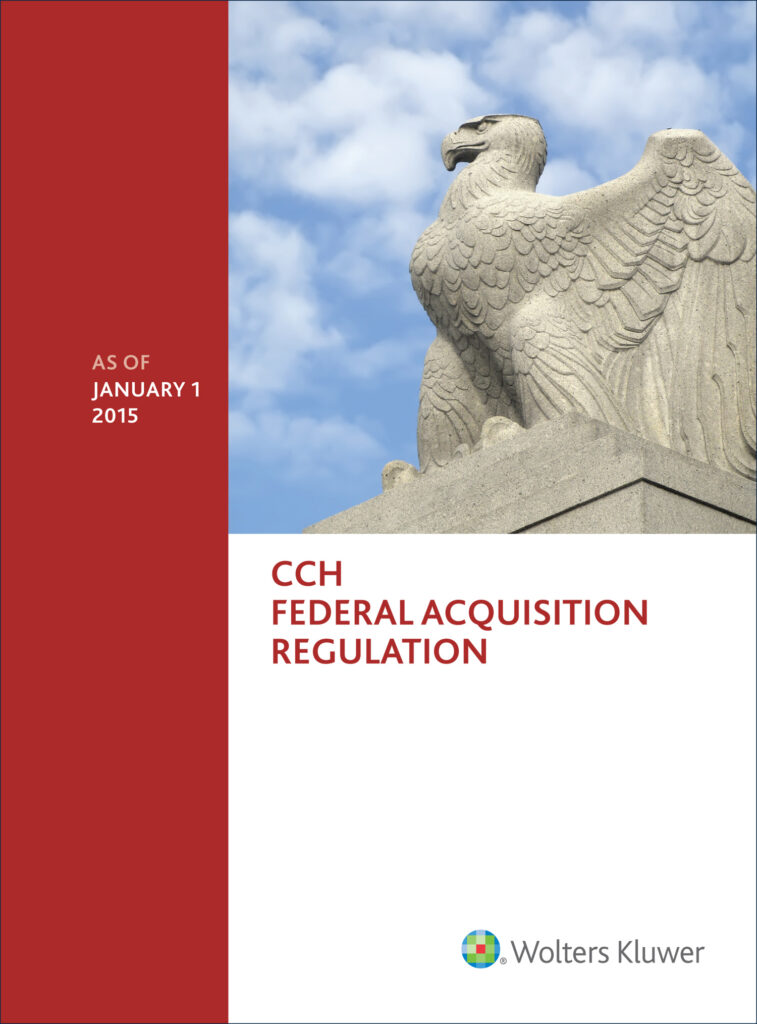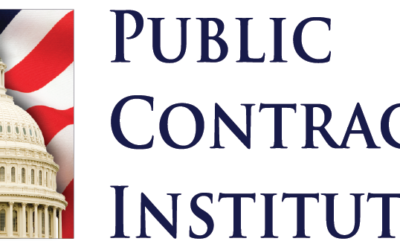This article provides an expose on the Federal Acquisition Regulation (FAR) prescriptions for both the Government and taxpayers for the submission and receipt of unplanned and unexpected unsolicited proposals. Particularly, how do the terms “R&D”, “Unique” and “Sole Source” construct a mandatory process and considerations for the control and administration of unsolicited proposals?
What are FAR governed “unsolicited proposals”?

Per FAR, when unsolicited “new and innovative ideas” for primarily Research and Development (R&D) purposes (including other service and product ideas/concepts) are proposed to the federal Government in the prescribed format, these are considered unsolicited proposals.
Pointedly, the Government’s FAR policy states:
“It is the policy of the Government to encourage the submission of new and innovative ideas in response to Broad Agency Announcements[i], Small Business Innovation Research topics, Small Business Technology Transfer Research topics, Program Research and Development Announcements, or any other Government-initiated solicitation or program. When the new and innovative ideas do not fall under topic areas publicized under those programs or techniques, the ideas may be submitted as unsolicited proposals” – FAR 15.602. Specifically, unsolicited proposals are not submitted in response to any Government-initiated solicitation or program; they are unsolicited.
Further, new unsolicited offerings must also prevail “uniquely” in purpose, concept, etc., of individual origination (by an individual offeror or other entity), to be valid (legal and acceptable) for consideration by the Government. In other words, the proposed product or service must be, primarily, unique for any consideration. To be sure, the Government shall not be involved in the origination or development of these proposals.
Interestingly, unsolicited offerings of ideas, products and services classified as “Commercial” submitted to the Government, however for “further” independent “development” (notice R&D application), may be identified and subsequently also classified as unsolicited proposals.
Moreover, a FAR governed unsolicited proposal is a proposal that must be submitted to the Government in the content and form prescribed by the FAR, and, with the intent to devote the resources, time and effort to establish a federal procurement contractual arrangement of best value for the Government targeting successful contract performance. This process does not take the simple form of singular communications.
What is NOT a FAR governed “unsolicited proposal”?
Advertisements
Although these may be considered offerings to the Government, they are not “proposals” to the Government, as prescribed, and so they are not “unsolicited proposals”. Examples: advertisement materials, or email communications submitted to the Government, telephone inquiries, meetings or “preliminary meetings” attended by and/or held with the Government and designed to introduce the products and services or capabilities of the offeror/ firm/contractor/vendor.
Contributions
Voluntary contributions, donations, handouts, suggestions and routine correspondence are not unsolicited proposals. By their nature, these contributions would not constitute the prescribed form for a proposal, particularly, the identifying, technical, cost and supporting information required.
“Comparable” Commercial Products and Services
Simply by virtue of being “commercial” by FAR definition primarily: “competitively” and “previously sold in substantial quantities to the general public”; “in the market place”; using “established market prices; a “nondevelopmental item”, etc, “comparable”, “replacements” or “alternates” for “existing” products or services although introduced to the Government are not considered unsolicited proposals.
*For specificity, commercial products/services offered for “further unique development” would be incomparable, individually originated without the Government’s assistance, and, proposed pursuant to FAR Part 35 R&D acquisition requirements for “basic” and “applied” research concepts.
The “Unique and Innovative”, “Sole-Source” Factor
The key determinant in the judgement of whether, or not, an unsolicited proposal is truly valid is if what is offered befits uniqueness. Another qualifying factor and requirement for valid unsolicited proposals is that the proposed product or service must demonstrate “innovation”. While innovation is also defined as “new”, the concepts and processes of or for innovation are not rigorous or necessarily unprecedented. Here lies the significant and noteworthy contradistinction between the required “unique and innovative” qualifications.
To be sure, a unique, innovative product or service idea or approach would be a sole, inventive conception, unusual, and/or without a like or comparable idea or approach. For example, a proposed unique and innovative product or service idea or approach which is similar or comparable in purpose, concept, design, etc., to those supplies and services offered under the “GSA Federal Supply Multiple Award Schedule (MAS) contracts” would not be considered “unique and innovative” for the purposes of a federal acquisition.
The Government would do well to make this point particularly clear to potential offerors in preliminary notifications. Why?
Specifically, if a proposed idea, concept, product or service is not truly unprecedented, it cannot be sole-sourced – see FAR Part “6.302-1 Only one responsible source and no other supplies or services will satisfy agency requirements”. These prescriptive conditions decree that “R&D”, “development” and preexistent unique product/service features, only, qualify as choices for Government sole source determinations. Simply put, the Government cannot sole-source acquisition requirements on any other basis. Further, absent these criteria, all other arguments for a FAR 6.302-1 justification to sole-source an acquisition are unacceptable.
To Clarify: The Government must use the prescriptions of FAR Part 15.6 to justify a potential FAR Part 6.302-1 sole source acquisition. How so? A true sole source product/service must, expectantly, be “unique”, or, require R&D for the idea and/or potential product or service.
The “R&D” Factor
Moreover, as aforementioned, FAR 15.6 informs potential offerors that the primary reason for submitting “UNSOLICITED” proposals is for R&D endeavors governed by FAR Part 35 Research and Development Contracting”. This method includes a three-part fundamental enterprise to engage proper R&D contracting.
In simplistic descriptive:
- “Basic Research” – This is knowledge-gaining early-research to explore ways or the way that a product/service idea can become a real deliverable. To do so, the researcher follows a specific plan. Example: A buyer uses an acquisition plan to develop strategies and considerations (objectives) while gathering required knowledge.
- “Applied Research” – This research is not necessarily separate from basic research but it also includes “applying” what is learned in basic research by identifying possible or futurenew discoveries and improvements in technology, concepts and materials to reach the goal of the research. In this research, specific performance requirements and end-results are identified. Example: The buyer identifies the exact strategies and specific performance requirements and end-results desired.
- “Development” – This process involves using specialized scientific knowledge and skill to design, develop, test and evaluate the potential new product or service. Example: The buyer design, develops, tests, evaluates and executes the plan.
The Point: The proposed R&D idea and/or deliverable must be unique.
Safeguarding the Unsolicited Proposal
There may be some data in a proposal that an offeror does not want disclosed to the public or used by the Government, except to evaluate the proposal, so the offeror will follow the regulation and include written restrictive legends (safeguard and handling instructions) in the proposal for the use and disclosure of the data.
The Government must ensure to safeguard the offeror’s unsolicited proposal data using the process prescribed @ FAR 15.609(f) through (h) “Limited Use of Data” for the receipt, preliminary review and/or evaluation of the data and proposal.
This is particularly important since the Government can use non-Government or non-agency evaluators if the Government determines that a “Comprehensive Evaluation” is required. A chart that depicts a simplified organization of the limited use of data prescription is illustrated here.
The “Comprehensive Evaluation” Process
A designated “Agency Contact Point” (ACP) (customarily and preferably a “Contracting Officer (CO))” conducts an “initial review” (rudimentary/earliest review) of an unsolicited proposal to determine compliance with the requirements of FAR 15.606-1. If the requirements are met, a comprehensive evaluation is required. However, the designated ACP determines whether, or not, a comprehensive review is required and that determination is final.
These specific evaluations are conducted to perform an exhaustive examination of unsolicited proposals to identify and determine whether these offerings meet the criteria as prescribed and exemplified by federal regulation (FAR 15.606-2) and as prescribed by Government research initiatives or otherwise. Essentially, the offerings should be practical for the intended use and as previously stated, particularly, with no exception, “unique and innovative”.
However, a fundamental and important consideration in this processes is that FAR 15.600 sets forth the policies and procedures concerning the submission, receipt, evaluation, and acceptance or rejection of unsolicited proposals, NOT FAR 15.3, although the Government can certainly negotiate terms and conditions and trade-off any corresponding and subsequent cost, capability or performance, schedule goals and acceptance considerations.
Specifically, FAR 15.6 (15.606-2) prescribes the factors that shall be developed and submitted by the Contractor and that shall be used by the Government for evaluation. The evaluators are professional subject-matter experts (SMEs) who use the prescribed/supplied factors and, engineered, specialized skill and knowledge resourcefulness to identify the offeror’s degree of capability or special ability to provide the unique deliverable, meet mission requirements and achieve successful contract performance.
A “Favorable Evaluation” – Does This Guarantee Acceptance?
The Government is NOT REQUIRED TO ACCEPT UNSOLICITED PROPOSALS AS A RESULT OF FAVORABLE EVALUATIONS. Why?
Here’s a non-exhaustive list of general reasons:
- Must meet the agency-specific mission, e.g., an unsolicited proposal for a specific environmental protection idea would be submitted to the US Environmental Protection Agency (EPA), not the US Treasury Department Internal Revenue Service (IRS) – OR
- Timeliness – The Govn’t may not need or absolutely need, or be able to use the proposed product or service at a particular time;
- Non-Availability of sufficient funding for the endeavor;
- No available qualified technical representatives to manage a contract effort;
- The uniqueness of the proposal may develop unfavorable contingencies. (ie., a costly system’s reconfiguration or, render a total overhaul of organizational processes and procedures, etc.).
NOTEWORTHY CONSIDERATIONS:
PLAN, PLAN, PLAN
Have a plan of action through the conduct of timely and thorough acquisition planning. Moreover, possibly have a “Plan B” to provide for contingencies. It can prove quite wasteful and disappointing having to accept unplanned resources that may not be necessary and wherein the process, there is skepticism. Good planning can eliminate settling for costly bright ideas since it may be more advantageous for the Government to use its own repository of bright ideas.
PROVIDE FOR FAIR COMPETITION AND OPPORTUNITY
Shop around to create choices and avoid (i) potential sub-standard availabilities that fall short of the real need end result or (ii) choosing costly, unnecessary monopolizing fluff. Competition is good and necessary to avoid the monopolization of opportunities.
Use “Plain language” work descriptions – Innovation and commercial practices breed successful contractual relationships and acquisition reform when a buyer better understands the need/requirement, AND, an offeror’s proposal. Moreover, if and when deemed necessary, use plainer language so all parties can understand and plainly see, whether or not, best value has been achieved as planned.
Remember – Per federal regulations, FAR Part 15.6 must be used to justify a potential FAR Part 6.302-1 sole source acquisition. The FAR’s authority for “sole source” acquisitions used to read quite differently; at one point the authority did not limit the choice primarily to unsolicited research proposals. So now, if an offeror proposes a truly unique offering, to circumvent the competitive process, they have to prove it and thru the FAR Subpart 15.6 process instead.
Examples
Examples of the following are provided here:
- Unsolicited Proposal Preliminary Information
- FAR 15.6 Technical Agency Points of Contact for Potential Unsolicited Proposal Preliminary Meeting Request Memorandum
- FAR 15.606-1 Unsolicited Proposal Initial Review, Acknowledgement of Receipt and/or Rejection Letter
- FAR 15.609 and 15.606-2 Legends and Unsolicited Proposal Request for Comprehensive Evaluation Memorandum
- FAR 15.607 Unsolicited Proposal Comprehensive Review Letter
[i] “Broad Agency Announcements ((BAAs)” are used for the acquisition of basic and applied research for a development that is not related to the development of a specific, applicable procurement and/or for scientific study and experimentation directed toward advancing the state-of-the-art or increasing knowledge or understanding rather than focusing on a specific system or hardware solution. Additionally, the evaluation of potential “Energy-saving performance contracts” unsolicited proposals is not governed by FAR 15.6; these evaluations are governed by 10 CFR436.33(b).


